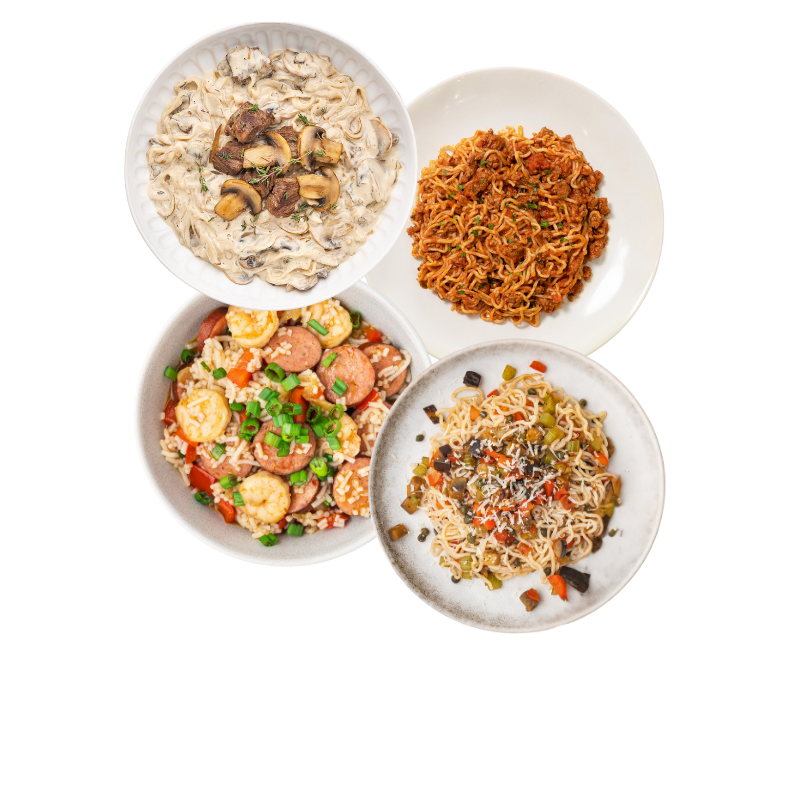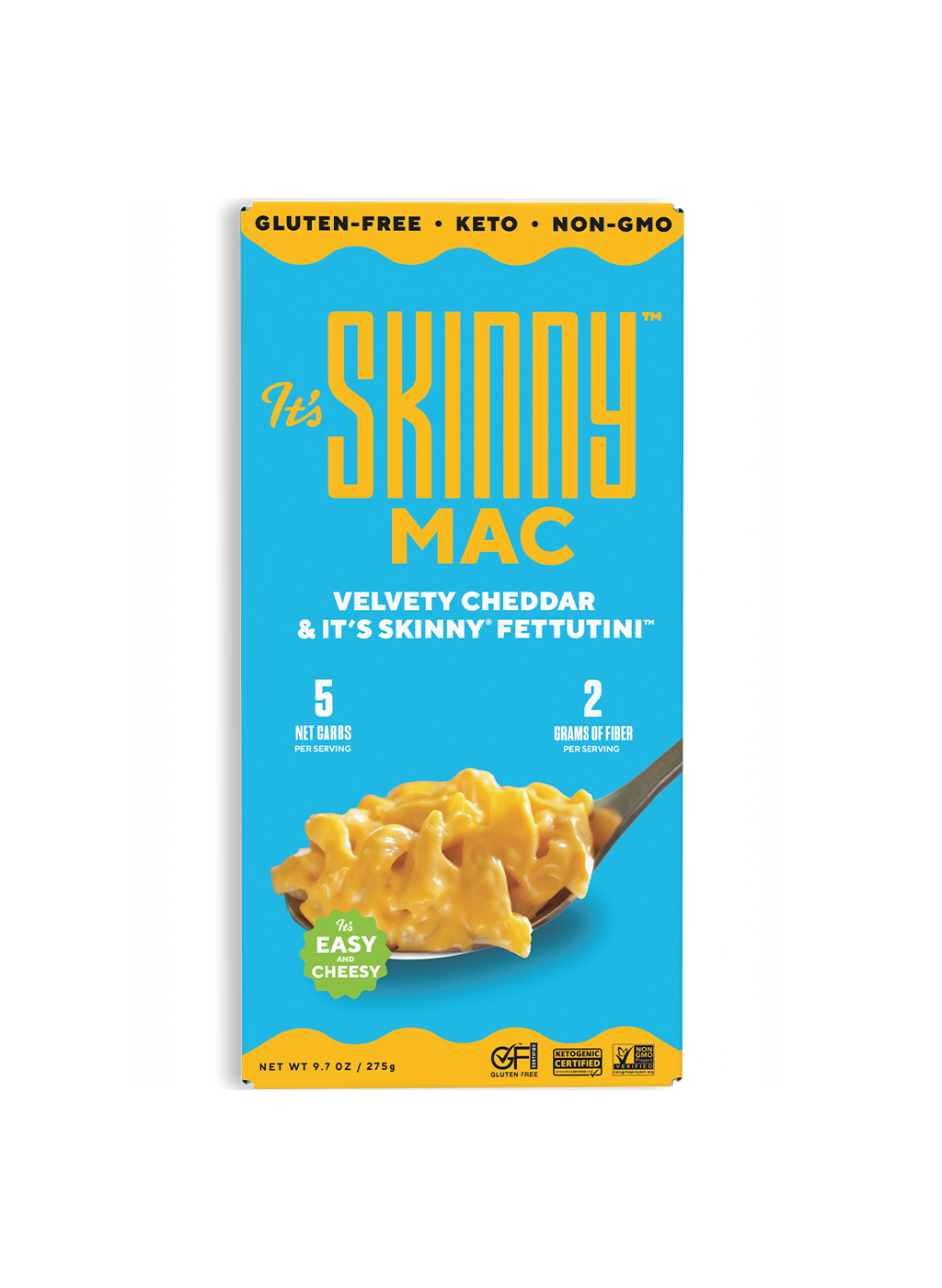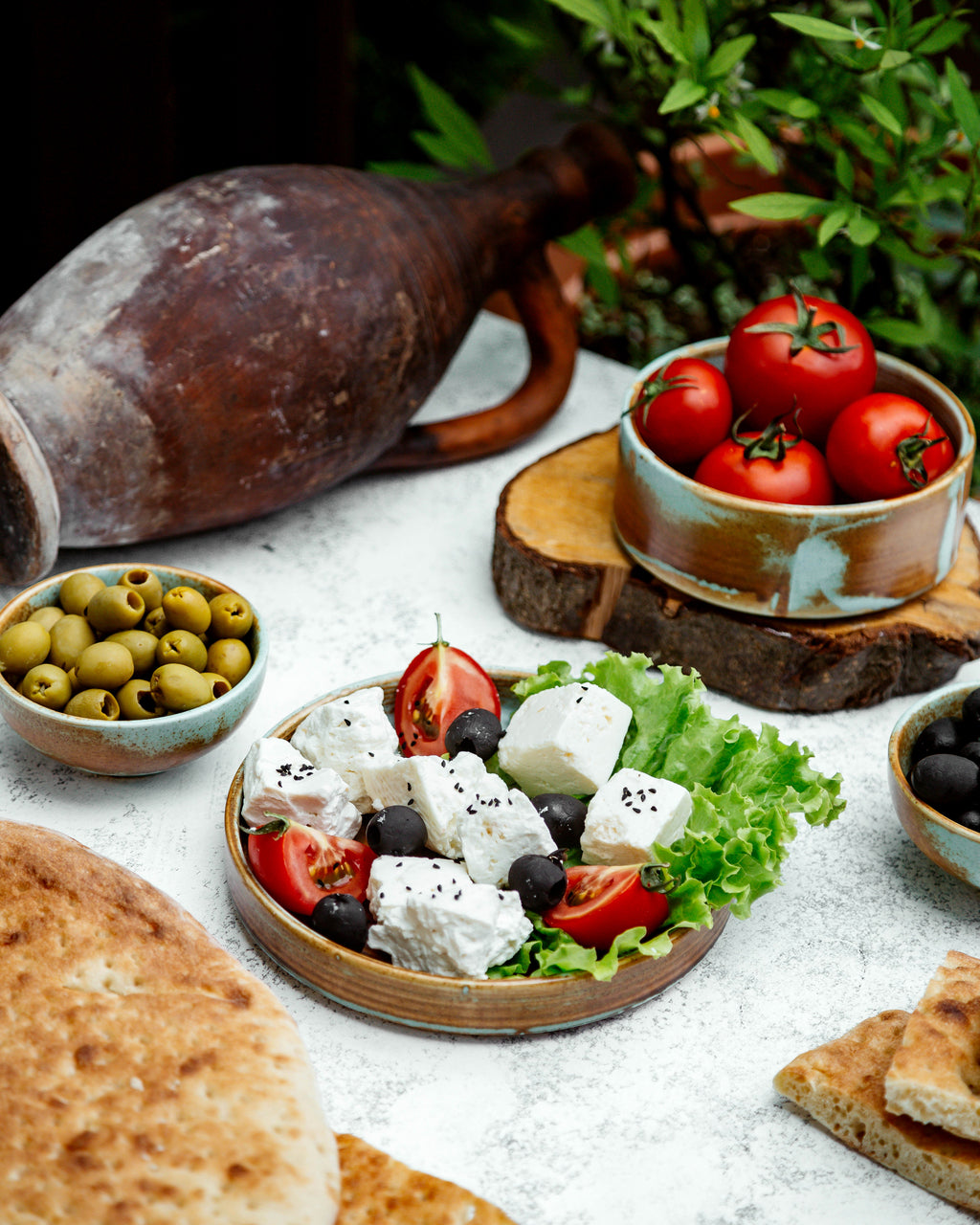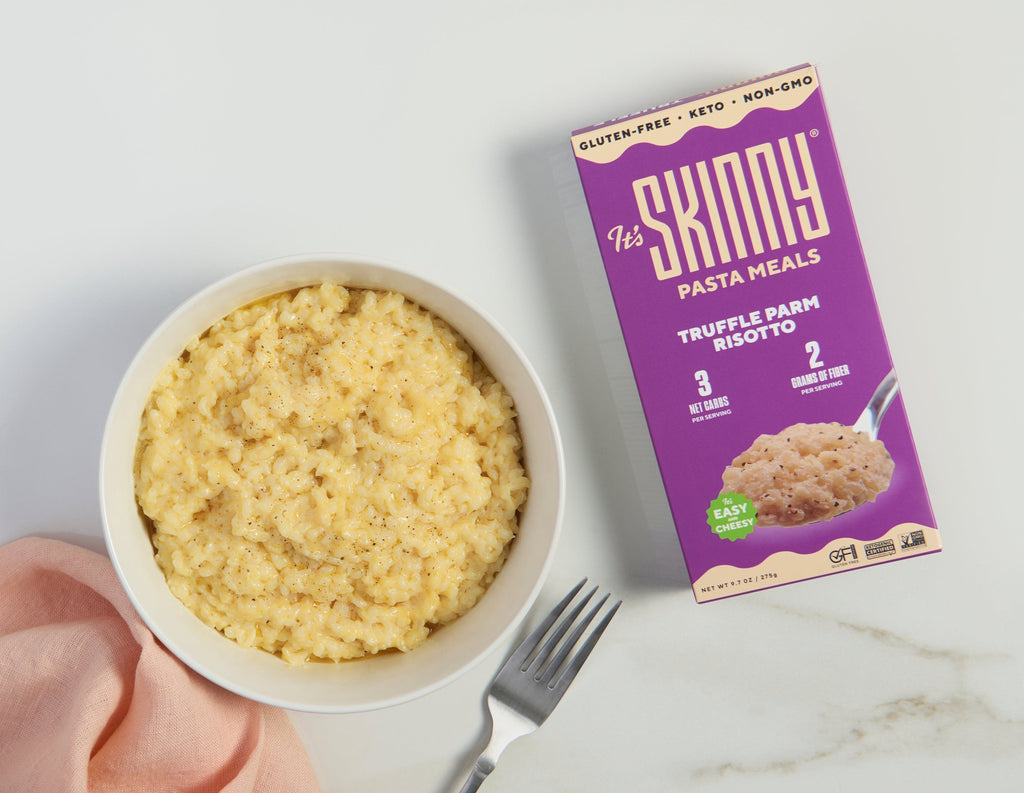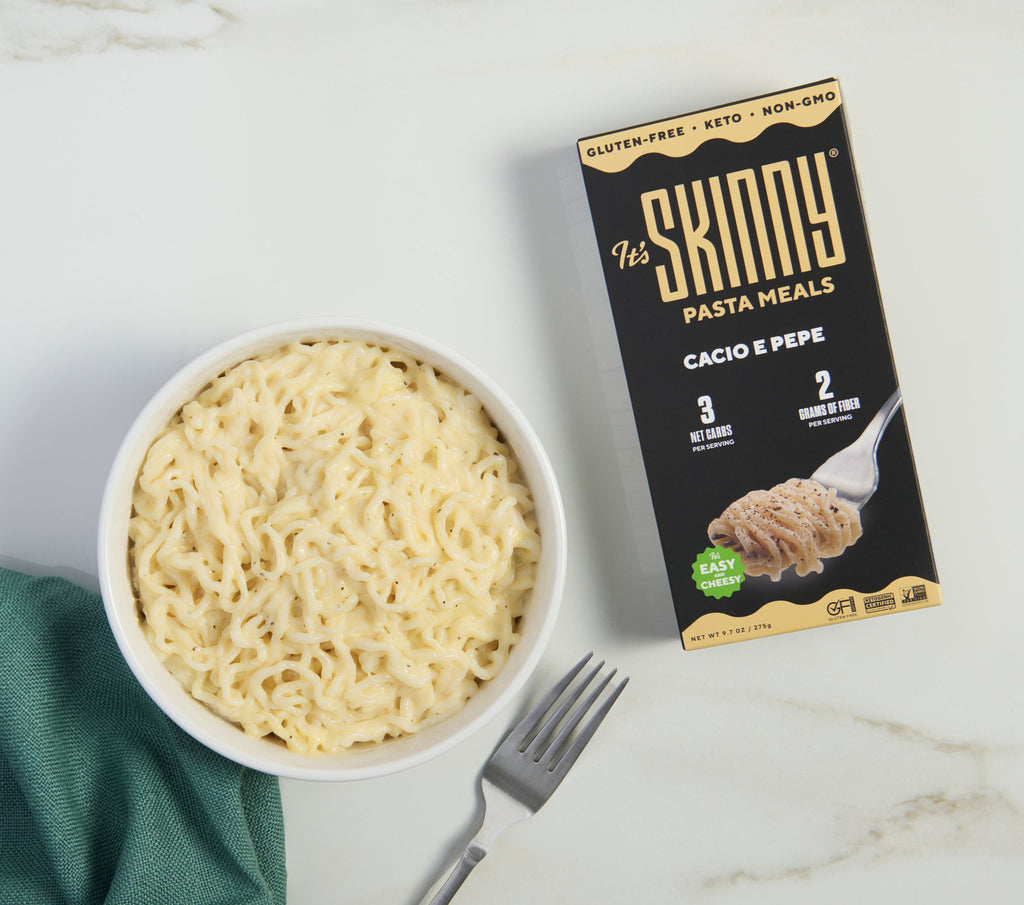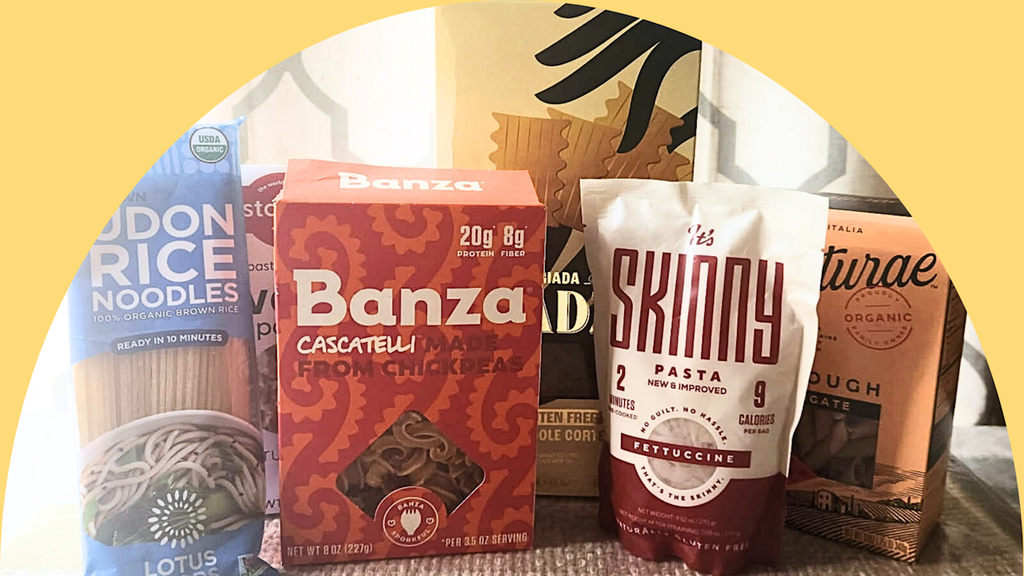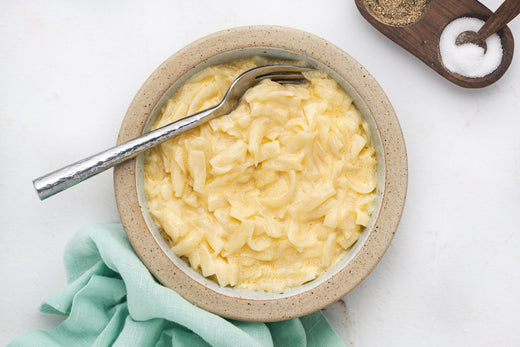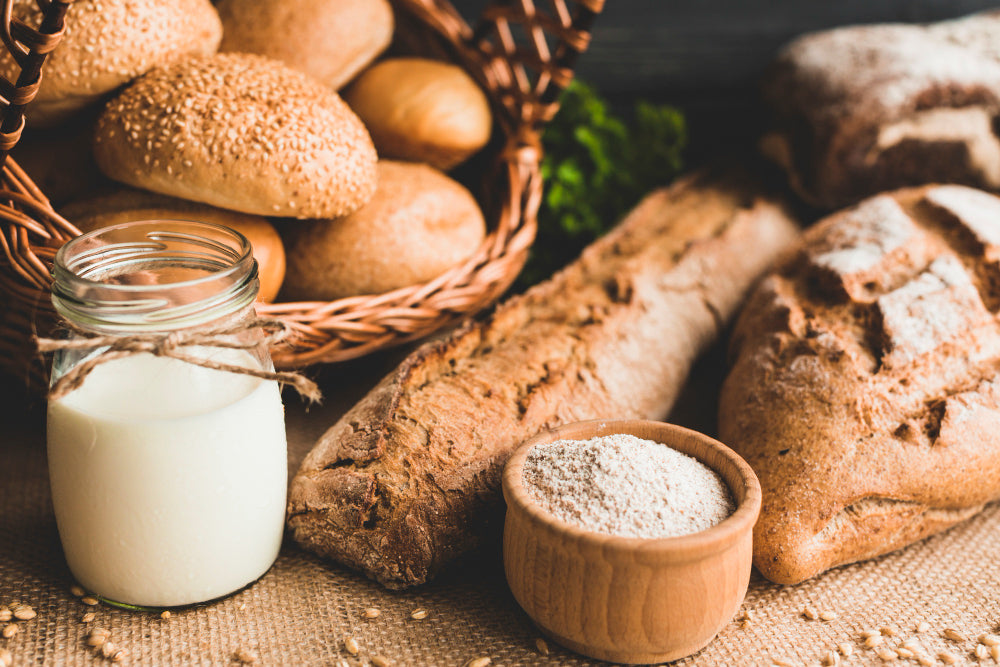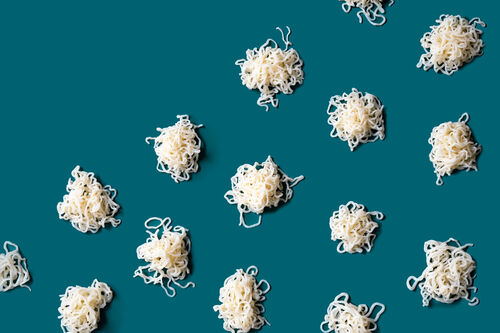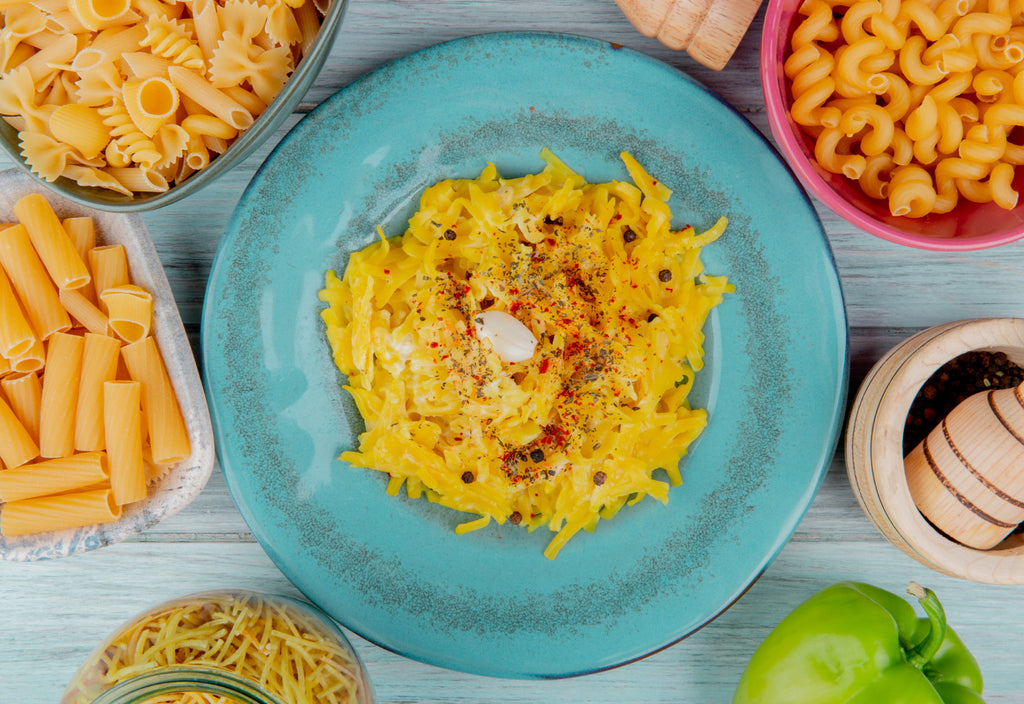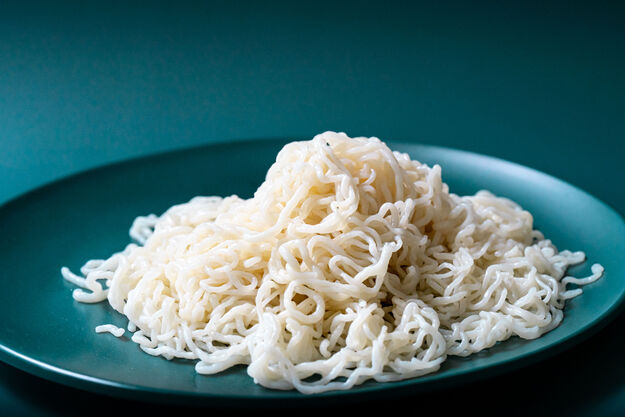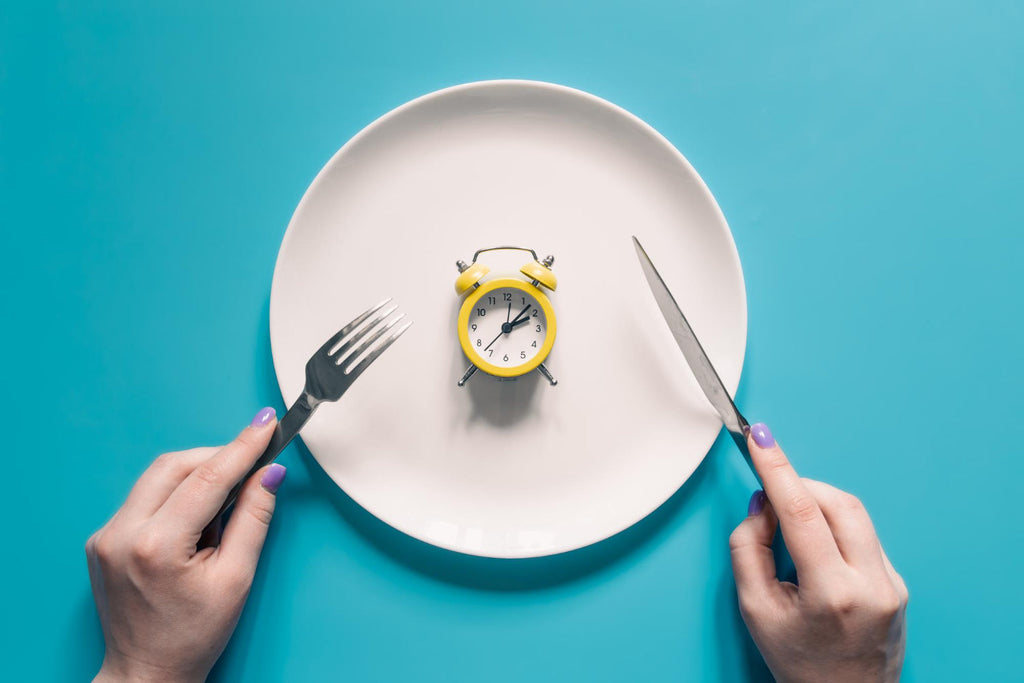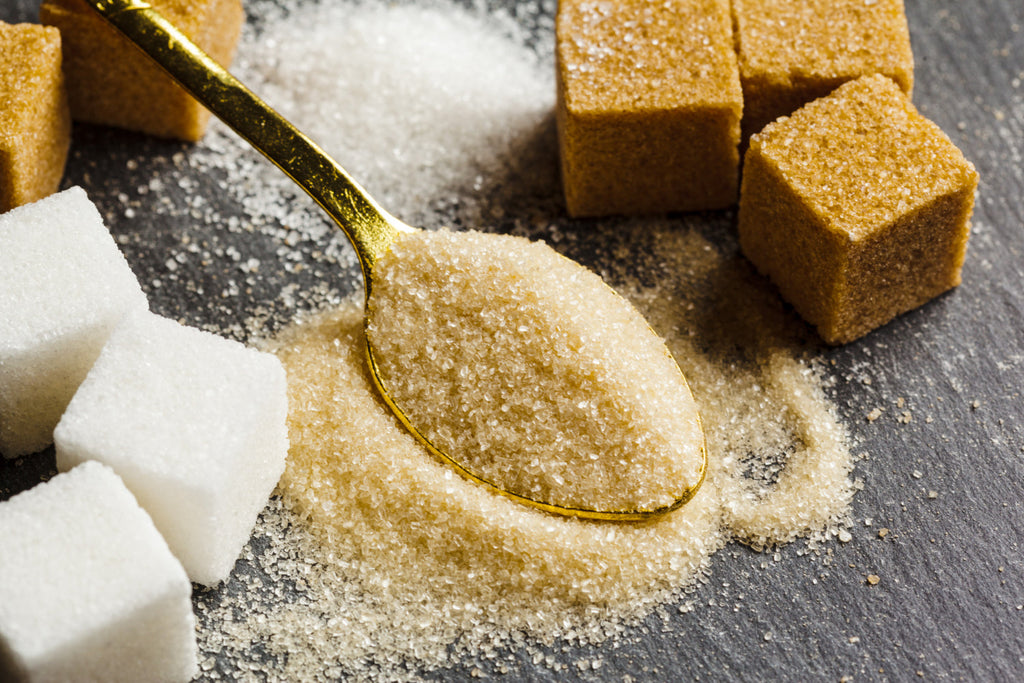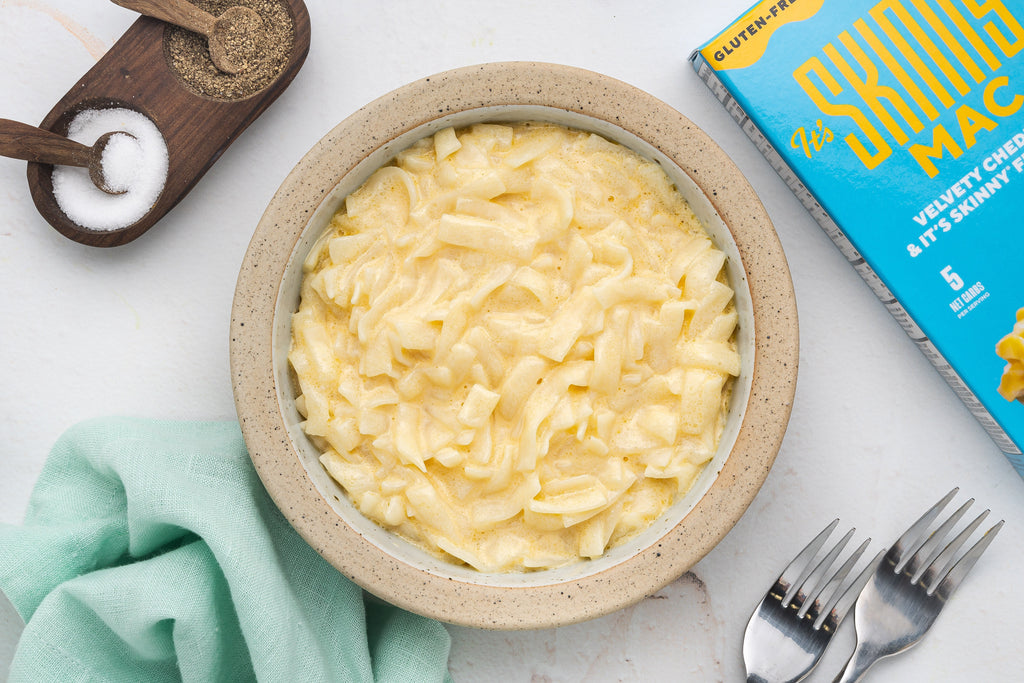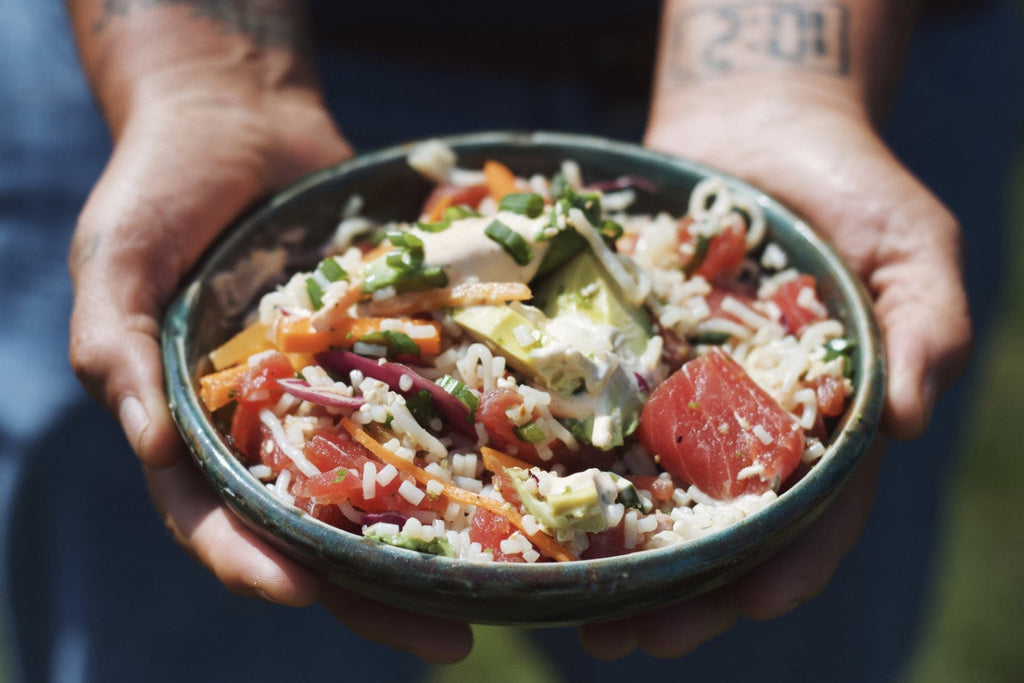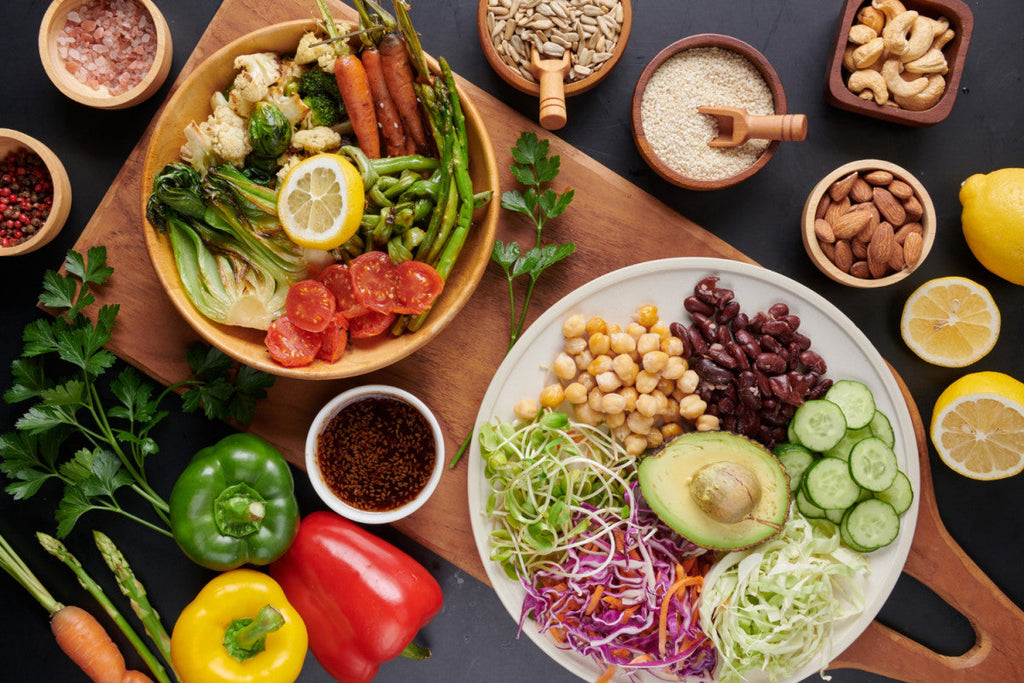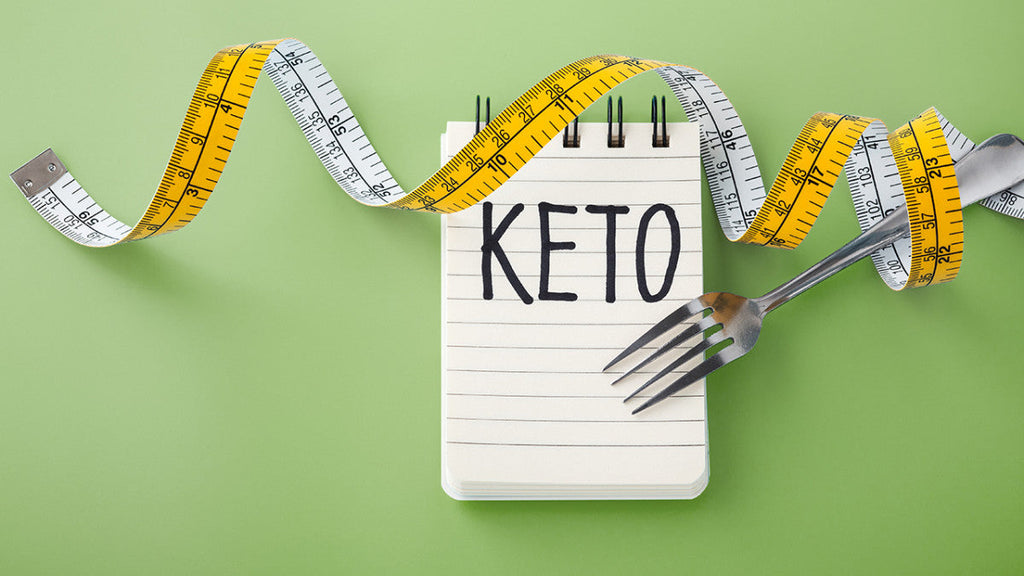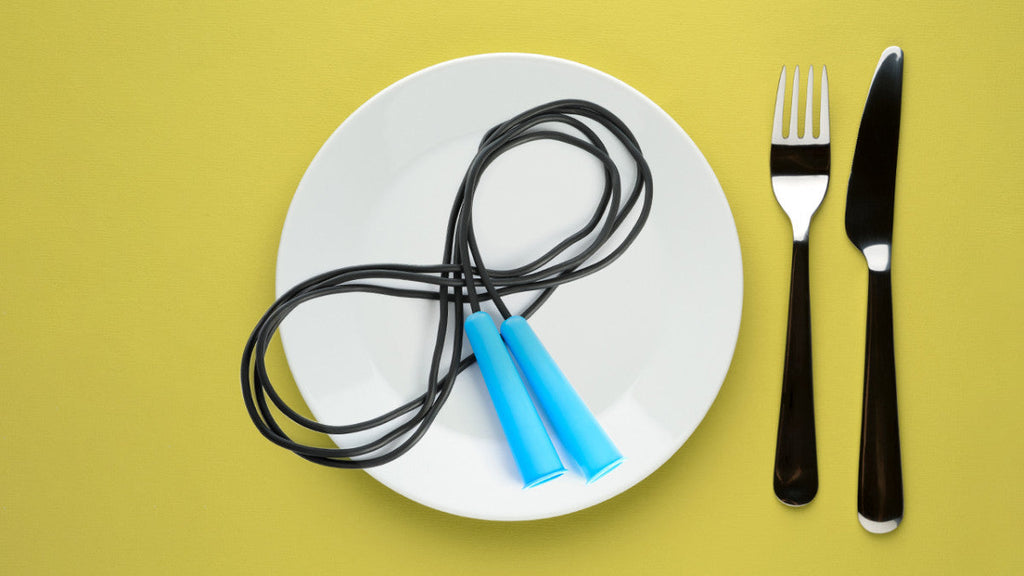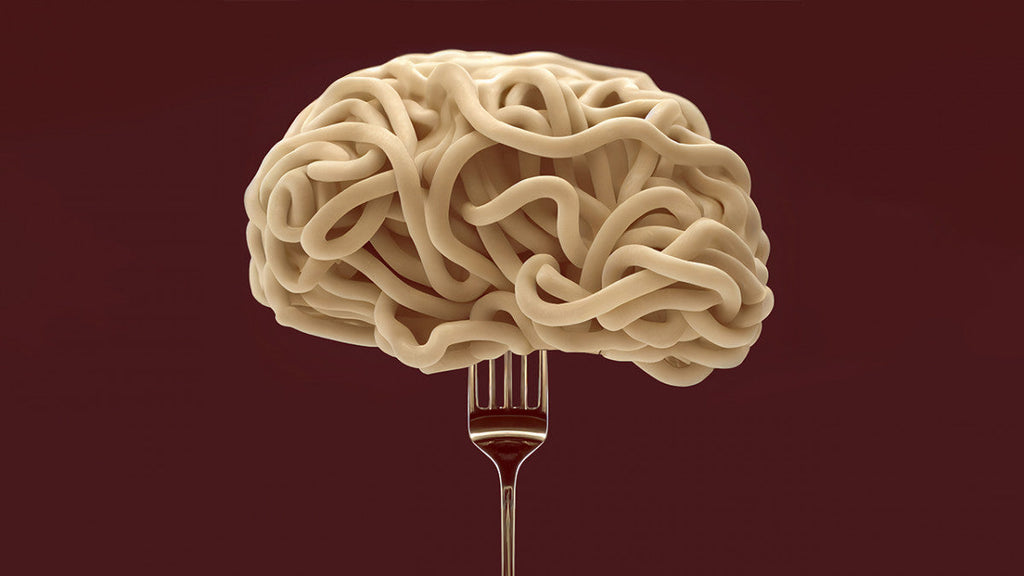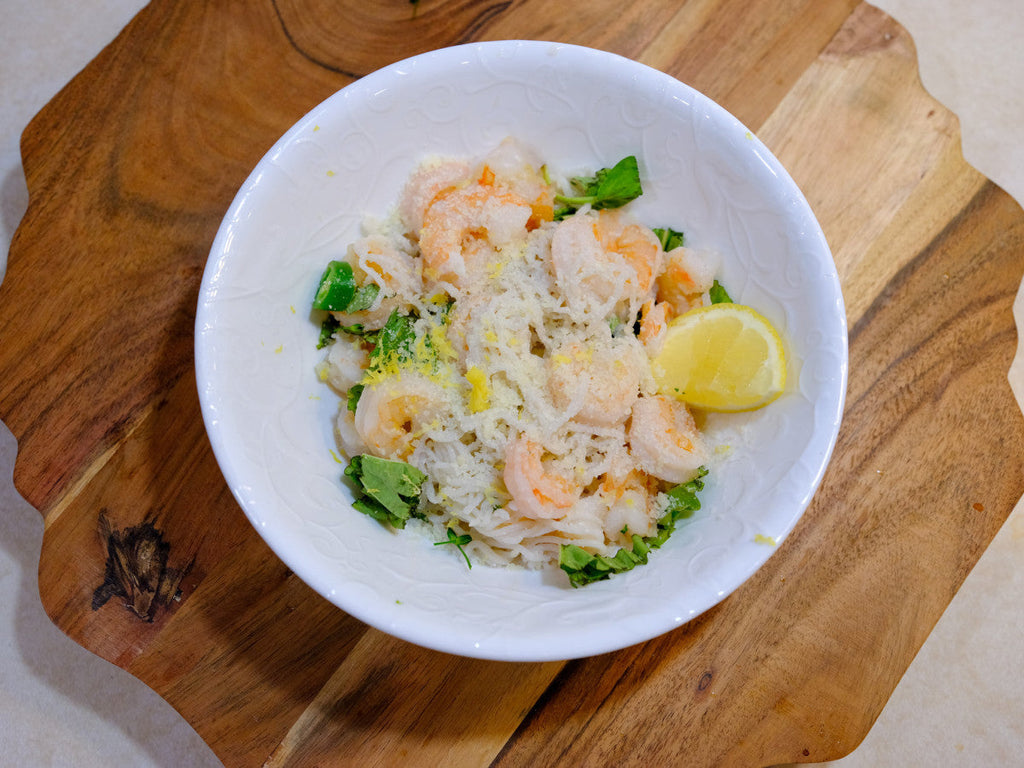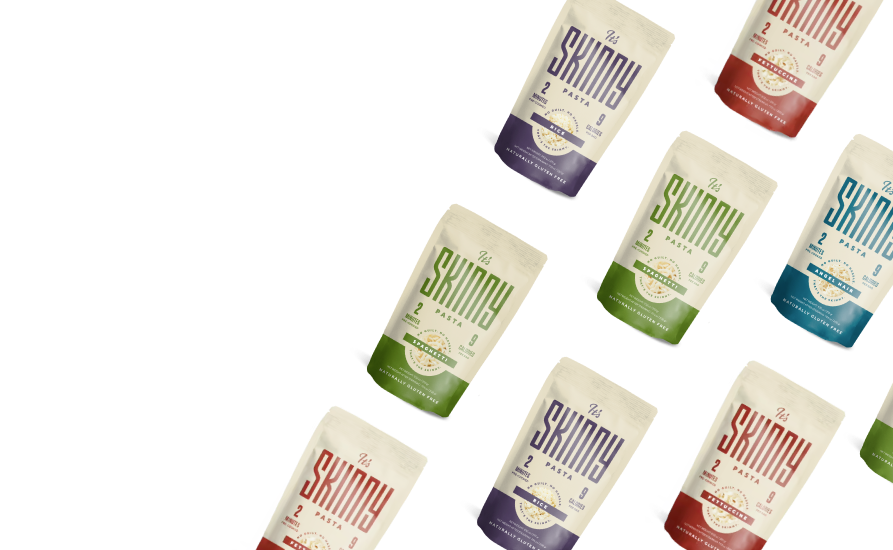Is Gluten-Free the Same as Low-Carbohydrate?
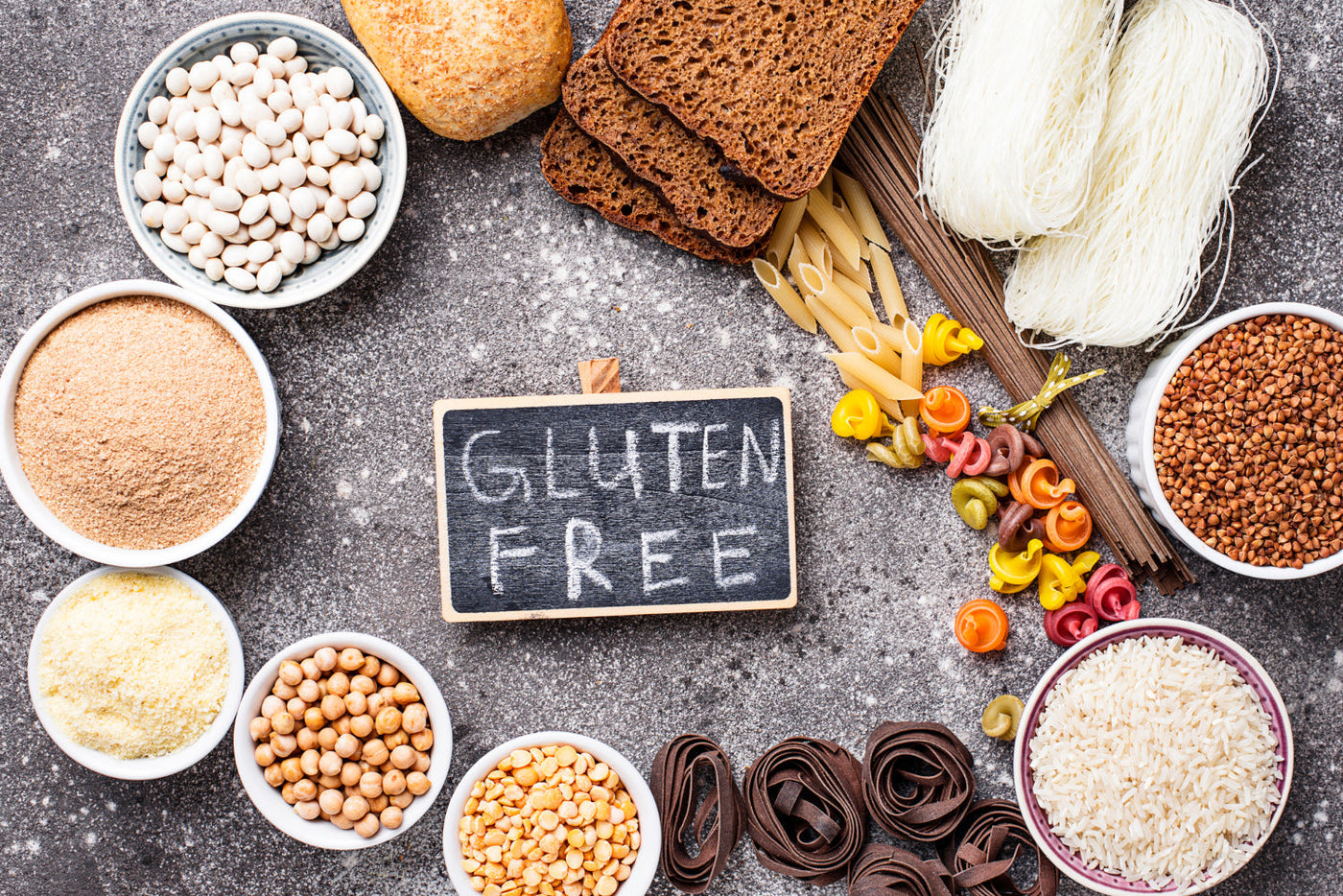
If you’re watching your carbohydrate intake to control your weight and fitness, you might eye those gluten-free snacks at the grocery store. Is Gluten-free the same as low-carb? Is gluten-free carb-free?
The short answer is that the terms gluten-free and low-carb refer to two different dietary concepts…but the longer answer is that yes, there is some overlap. Today, we’ll break it down: what’s the difference between gluten-free and low-carb?
Gluten-Free vs. Low-Carb
Gluten-free and low-carb refer to two different ideas, but both indicate that certain ingredients and nutrients are contained within the food. Here's a short breakdown of each:
Gluten-Free: Gluten-free refers to foods that don't contain the protein gluten (yes, that's right, gluten is a protein!). Gluten is in grains like wheat, rye, barley, and their derivatives. People might go gluten-free to manage celiac disease, gluten sensitivities, or a wheat allergy. Some folks find gluten-free diets help them manage autoimmune disease and irritable bowel syndrome, amongst other illnesses.
Naturally, gluten-free foods include fruit, vegetables, meat, poultry, fish, most dairy, legumes, nuts, and gluten-free grains like rice, quinoa, and corn. Keep in mind that with extreme gluten sensitivity or allergies, cross-contamination is often a concern, so many processed foods might be made of gluten-free ingredients, but if they don't indicate it on the label, it's best to steer clear if you're sensitive.
What foods are off the menu? Wheat, barley, rye, and any derivatives. That includes most forms of bread, pasta, cereal, and processed foods. As you can see, bread, pasta, and cereal are often high-carbohydrate foods, which is why there may be some confusion and overlap.
Low-Carb: A low-carb diet is one where you restrict and lower your intake of carbohydrates. Carbohydrates are sugars and starches. When you reduce your intake of these fast-burning foods, your body uses your stored fat for energy (instead of carbs).
Because a low-carb diet isn’t preventing an allergic reaction or a sensitivity, it’s more flexible. If you’re following a low-carb plan like the ketogenic diet, you may need to keep your carbohydrate intake under a certain level to keep your body in a state of ketosis. Otherwise, a low-carb diet is more about shifting away from your intake of high-carb foods.
Naturally low-carbohydrate foods include meat, poultry, fish, eggs, nuts, seeds, most non-starchy vegetables, and some dairy products. Some fruits and whole grains are usually permissible on a low-carb diet, but because they contain natural sugars, you may want to avoid them. Off-limit foods include sugary snacks, bread, pasta, rice, potatoes, and sugary drinks.
Low-Carb vs. Gluten-Free: What are the 5 Key Differences?
So, what are the key differences between low-carb and gluten-free? Here are 5 of the main factors that make low-carb different from gluten-free.
1. The Focus on Gluten
The first and foremost difference between low-carb and gluten-free diets is the focus on gluten. Gluten-free diets eliminate gluten-containing grains. For those with gluten-related intolerances and health disorders, a gluten-free diet makes a world of difference in their health and well-being.
2. The Focus on Carbohydrates
Low-carb diets are focused on reducing the carbohydrate intake from sugars and starches. Although some gluten-rich foods like bread, pasta, and processed foods are excluded from a low-carb diet, the issue isn’t the gluten. The emphasis on low-carb is about controlling your blood sugar and insulin levels to promote and enhance your fat metabolism.
3. The Health Goals of the Diet
Gluten-free diets are essential for the health of people with celiac disease and wheat allergies. While some folks might experience weight loss when they go gluten-free, it's not the diet's focus. Low-carb diets, on the other hand, are often an excellent option for losing weight, controlling blood sugar, and boosting metabolic health.
4. Allowed Grains on the Diet
Grains like rice, quinoa, and corn don’t contain any wheat gluten. So many people who follow gluten-free diets can usually still have products made from these grains. Low-carb diets often limit your intake of non-gluten grains, as they still contain carbohydrates.
5. Nutrient Composition and Targets
Gluten-free diets are focused on eliminating gluten content. While a reduction in carbohydrate intake may come along with that, it’s not the primary focus. Low-carb diets are focused on reducing carbohydrates, regardless of the presence of gluten.
As you can see, there’s some overlap between gluten-free and low-carb meal plans; the overall goals of the diet are different, and they serve different purposes. If you don’t have a gluten intolerance, allergy, or related illness, gluten-free may not fit your goals.
Of course, it's essential to always consult a registered dietician or your healthcare provider for medical advice before you switch to any diet—keto, low-carb, or gluten-free. They can guide you and help you find the best eating plan to fit your health and weight loss goals.
Decoding Gluten-Free vs. Gluten-Friendly
What about foods that say "gluten-friendly?" Are they the same as gluten-free? Are they low-carb?
In recent years, many food companies have moved away from the term “gluten-friendly” because it’s not a standardized food term. Manufacturers may put it on foods that don’t contain gluten in the ingredient list, but it’s important to recognize that the items may still be processed or packaged near foods that contain gluten.
If you have celiac disease or non-celiac gluten sensitivity, avoid foods that have the possibility of cross-contamination. That means that foods that say "gluten-friendly" are probably a no-go.
Gluten-friendly is a term often used to indicate that a food is suitable for flexible diets. Some folks find that they may have a slight gluten sensitivity. When they avoid gluten, they might feel better, have clearer skin, smoother digestion, and other benefits.
No matter what type of diet or meal plan you follow, how you feel is one of the most critical factors. If you find that you prefer to avoid gluten-containing foods and choose gluten-free alternatives when possible, then by all means, go for it! We’re often the best judges of our body’s reactions and feelings.
If a health care professional advises you to avoid gluten for safety and health reasons, then gluten-friendly foods are likely not safe enough. But for those who prefer to avoid gluten, gluten-friendly foods offer a flexible option.
Gluten-friendly doesn't mean low-carb. Although some foods are coincidentally low-carb and gluten-friendly, the two terms aren't synonymous.
Can Gluten-Free Foods Help with Weight Loss?
Can you use the trick of looking for the “gluten-free” (GF) symbol on your food to reduce your carbohydrate intake? If you’re trying to go low-carb, is gluten-free a hack?
Again, the answer is yes and no. Choosing gluten-free foods can help you reduce carbs, but gluten-free doesn't mean low-carb. While gluten-free foods don't contain gluten grains like wheat, barley, and rye, many still have other carbohydrates.
If you’re looking for foods that are gluten-free and lower in carbs, try the following:
- Vegetables: Most vegetables are gluten-free, and many are also lower in carbohydrates. These veggies include leafy greens, broccoli, cauliflower, zucchini, bell peppers, and tomatoes.
- Proteins: Meat, poultry, fish, eggs, and tofu are all gluten-free. These high proteins are naturally low in carbohydrates. Most meat contains zero grams of carbs.
- Dairy: Plain, unsweetened dairy products like milk, yogurt, and most types of cheese are also gluten-free. However, dairy products contain some carbohydrates, particularly in the form of lactose (milk sugar).
- Nuts and Seeds: Most types of nuts and seeds are also gluten-free. These are a great source of protein and healthy fats. Keep in mind that some flavorings may contain gluten, so it's important to check the label. Nuts and seeds also contain some carbohydrates, so portion control is crucial.
- Gluten-Free Grains: Corn, rice, quinoa, millet, buckwheat, and some other grains are typically safe for those with gluten allergies and sensitivities (provided they’ve been packaged safely). These grains are often somewhat lower in carbs than white flour-based counterparts, but they will still contain carbohydrates.
- Legumes: Legumes like lentils and chickpeas are gluten-free. These pulses contain moderate carbohydrate levels but can often be included in lower carb eating plans.
Gluten-free processed foods often contain alternative flour and starches like rice flour, potato starch, and tapioca starch. Even though these alternatives don’t contain gluten, they can make gluten-free bread, pasta, and baked goods higher in carbohydrates. Gluten-free flours can still have carbs; sugar itself is even gluten-free!
If you hope to lose weight on a low-carb diet, the best method is to focus primarily on whole, unprocessed foods. Watch the carbohydrate content on any packaged and processed items. Some gluten-free products can help you bridge the gap, but gluten-free is not always low-carb.
Enjoying Pasta on a Gluten-Free or Low-Carb Diet
Whether you are gluten-free or following a low-carbohydrate diet, one food that’s likely off the menu is traditional pasta. Sad, we know!
But the road to diet success isn't paved with deprivation. In fact, by restricting your diet too much, you might give up, throw in the towel, or cave to carbs. Fortunately, we have a solution that will keep you on track. Meet your new pasta BFF: It's Skinny!
It’s Skinny is a special kind of pasta, known as shirataki. It's made from a plant called konjac. This funny-looking little root vegetable is very high in a special type of fiber, glucomannan, which fills you up with zero net carbohydrates. In some studies, glucomannan has been shown to keep blood sugar levels steady, and fiber offers many great health benefits.
What will shock you about It’s Skinny is how much it resembles traditional pasta in taste and texture. It’s the perfect low-carb option to remake all your favorite recipes! You can eat It’s Skinny guilt-free because it has only 9 calories per bag, zero net carbohydrates, AND it's gluten-free.
Whether you’re avoiding gluten or carbohydrates (or both), It’s Skinny is the perfect pasta option. It’s vegan, kosher, and suitable for those who follow the keto diet, paleo, and many other diets. It’s Skinny has such great stats that you can even enjoy it on intermittent fasting without breaking your fast!
Yet, despite all of those great numbers, It’s Skinny is satisfying and delicious. It comes in four great styles:
· Orzo
We offer traditional It’s Skinny as well as organic in each style. Can’t decide? Why not try a variety pack?! You can sample all the styles of It’s Skinny and test them out in your favorite pasta recipes. Need ideas? Explore our database for low-carb recipes and gluten-free recipe ideas.
It’s Skinny is so easy to use. Unlike many other gluten-free and low carb pastas, It’s Skinny doesn’t mean boiling water and waiting to get noodles to an al dente texture. It’s ready in just minutes. To enjoy It’s Skinny, simply open the pack, drain, and add the noodles to the rest of your ingredients at the end of cooking. Allow It’s Skinny to heat up for 2-3 minutes, and you have a perfect plate of pasta!
How does It’s Skinny taste? Like traditional pasta, It’s Skinny won’t overpower the other ingredients in your meal. Unlike zoodles or pasta made from squash, It’s Skinny doesn't have a watery texture or a strong taste. It takes on the flavors of the surrounding ingredients—the sauce and protein you add to your meal—for a delicious dish you'll adore!
It’s Skinny is pasta on your terms! We know that it’s hard to give up pasta, especially if you’ve been told that you have to go gluten-free for your health or you’re following a strict low-carb diet to lose some weight. It’s Skinny helps you feel satisfied and happy without the deprivation! Eat your favorite dishes again, and put (It's Skinny) pasta back on the menu!
Whether you're gluten-free, low-carb, or just looking for a light alternative to regular pasta, It's Skinny is a great option for everyone. Try it today!






